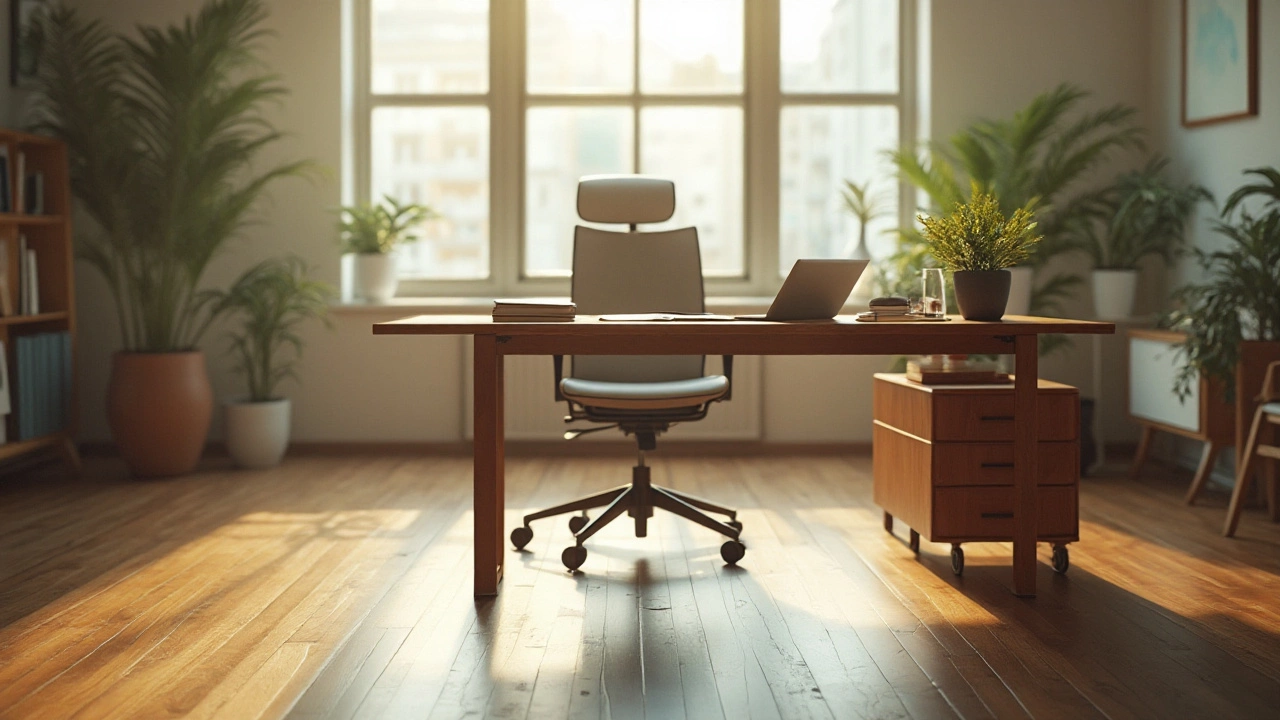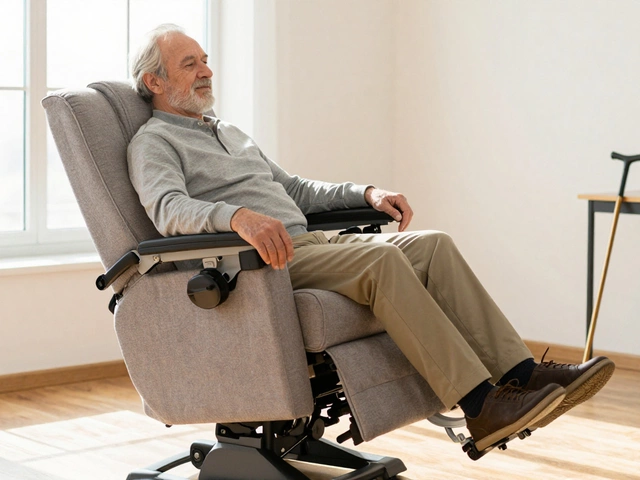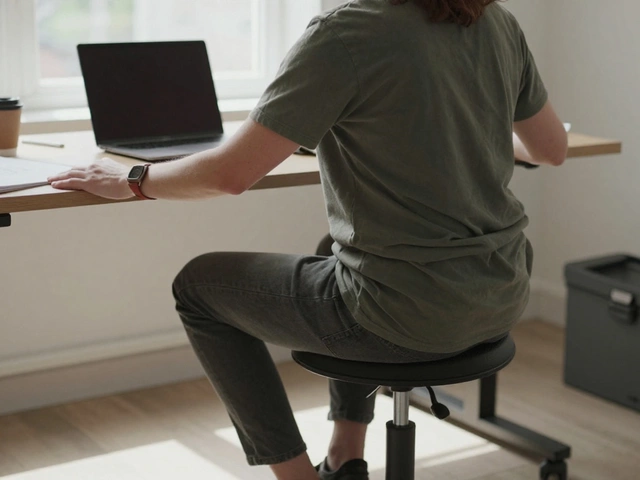Office Furniture: Smart Picks for Comfort and Productivity
When you walk into a workplace, the first thing you notice is where people sit. A good office chair does more than look nice – it keeps you upright, reduces fatigue and helps you focus. In this guide we’ll walk through the basics of picking the right chair, setting the perfect height, and keeping your furniture safe and functional.
Pick the Right Chair for Your Work Style
Not every seat is built the same. An office chair is engineered for all‑day use, with adjustable lumbar support, armrests and a swivel base. A desk chair, on the other hand, is often a simple stool meant for short bursts of sitting. If you spend most of your day at a desk, choose a true office chair that lets you tweak the backrest, seat depth and arm height.
One quick way to test a chair is to sit without the arms. Removing armrests can free up space and let you move more freely, but it may also affect posture. If the chair feels unstable or you start hunching, you probably need the support.
Brand matters, too. IKEA office chairs are popular for their modern look and price, but you should still check safety features like sturdy bases and reliable casters. A well‑designed chair will pass basic stability tests and feel solid under you.
Set the Perfect Height and Keep Things Fresh
Height is a simple adjustment that changes everything. Your feet should rest flat on the floor, knees at a 90‑degree angle, and your elbows at the same height as the desk. When the chair is too low, circulation suffers; too high, and your shoulders creep up.
How often should you replace a chair? Most experts say every 5‑7 years if you use it intensively, but look for signs like a squeaky mechanism, a sagging cushion or worn‑out wheels. Replacing a chair before it breaks down prevents back pain and saves money in the long run.
Regular maintenance also extends the life of your furniture. Tighten loose bolts, clean upholstery, and lubricate moving parts every few months. For IKEA chairs, follow the manufacturer’s guide to keep the frame sturdy and the casters rolling smoothly.
Finally, think about the overall layout. A clutter‑free floor and enough space around each chair improve movement and reduce accidents. When you arrange desks and chairs with a clear path, you create a more inviting and safer workplace.
Choosing the right office furniture doesn’t have to be a headache. Focus on ergonomic support, proper height, and regular upkeep, and you’ll notice a boost in comfort and productivity within weeks. Ready to upgrade? Start with a chair that matches your work style, set the height right, and keep it well‑maintained – your back will thank you.
Benefits and Drawbacks of Removing Office Chair Arms
Removing the arms from your office chair might seem a small alteration, but it can have significant effects on both comfort and productivity. This decision can impact ergonomics, posture, and potentially reduce the space required at your workstation. By understanding the potential advantages and disadvantages, individuals can make informed choices that suit their work needs. Exploring insights into adjusting your office setup can lead to a more comfortable and efficient work environment.
Essential Insights on Office Chair Replacement Frequency
Office chairs are an integral part of the workplace environment, significantly impacting comfort and productivity. This article explores how often these chairs should be replaced based on factors like usage, quality, and ergonomic needs. It provides practical tips on identifying signs of wear and tear and choosing the right time for replacement. By understanding these elements, businesses can ensure a comfortable and efficient workspace.
Examining the Safety of IKEA Office Chairs
IKEA office chairs are known for their modern design and affordability, making them a popular choice for home and workplace settings. This article explores the safety features and considerations of IKEA office chairs, including ergonomic benefits and potential risks. By understanding how these chairs are constructed and designed, consumers can make informed decisions when selecting seating options. We also provide tips on how to maintain these chairs for optimal safety and comfort.
Office Chair vs. Desk Chair: Key Differences Explained
An office chair and a desk chair may seem interchangeable, but they serve distinct purposes in the workspace. Office chairs are designed with ergonomics in mind, offering support for longer hours, while desk chairs are often simpler, catering to shorter sitting times. This article explores their unique characteristics, highlighting aspects like adjustability and comfort. Understanding these differences can enhance your workspace setup for improved productivity and well-being.
Finding the Ideal Office Chair Height: A Guide to Comfort and Productivity
Choosing the right office chair height is crucial for comfort and efficiency at work. This article explores the impact of chair height on posture, circulation, and concentration. It delves into ergonomic principles to help you determine the optimal chair height for your physical needs. Practical tips and adjustments to improve your workspace setup are also discussed.









